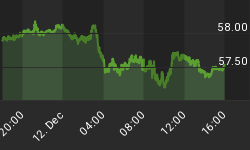The Present Situation
The 'better-than-expected' poor employment figures of last week were generally taken as a sign that the recovery is there, but L-shaped with a slightly rising bias. The new stimuli from government will be positive and hitting where they should. Tax breaks on new equipment and infrastructural development tastes the same as digging holes and filling them in did in the 1930's. We have to wait and see if the economy will respond. We sincerely hope it will. But do investors even in the U.S. believe that a recovery will see a fall in the gold price? We think not!
The Future of the Dollar
We ask the question, will a recovery help the U.S. Dollar? One of the factors that U.S. investors have looked at in the past, but has broken down this year is the belief that if the Dollar falls gold will rise and vice versa. Cast your mind back to the pre-credit crunch time and what did we see?
The U.S. Trade Deficit was a regular +$60 billion a month because imports were cheaper than locally made goods and consumers bought imports. Consequently the Dollar drifted over time, lower. With U.S. consumers more thrifty than then and buying cheap imports in place of local products, we expect the same to be true in a slow recovery. In fact, the Trade deficit has already been rising faster than expected for this very reason. As Asia adds to its expertise as time goes by the quality of their goods, but not necessarily the price, will rise and claim more market share than ever before. So in even a slow recovery, expect a rising Trade deficit. This is Dollar negative.
What should be of great concern to all is the internationalization of the Yuan. [Subscribers can access an article on this through our archives, or on request] Once this internationalization of the Yuan has gained traction we will see the use of the U.S. Dollar in international trade decline and fairly rapidly. The unused Dollars will have nowhere to go except home. On the world's foreign exchanges the result will be a decline in the Dollar's exchange rate. Unless there is a structural change in the import demand within the U.S., the U.S. will contribute to the Dollar's fall still. The only quick way out for the U.S. is Protectionism, which will help stop this decline. However, this will bring a far greater level of instability and uncertainty in foreign exchanges than we see now. This will be extremely gold positive.
The Positive Impact of a Recovery on Gold
The overall impact of a recession or even worse, is that the quantity of money shrinks, even in the investment world. Yes, in that scene gold is sought out as a preserver of wealth, but perhaps not in as great a volume as in an uncertain, unstable, recovering economy.
The shock of the last three years on the developed world could not have been greater as the U.S. economy and its position in the global economy reached it zenith, then buckled. In the years since then there has been a considerable metamorphosis in investment thinking. The rosy future has gone. The fact that any day could bring some more bad news, more uncertainty and more instability, is firm in all of our minds. Consequently, prudence is taking as greater place as muted optimism in the investment world and investment strategies are adjusted accordingly.
As part of that new prudence gold investments have found a solid place in successful portfolios. The strategy is to act as a counter to poor performing other investments. As this attitude to gold continues to grow, more and more investment managers are getting to know the value of gold even if they don't want it in their portfolios. More and more of those managers are turning from disliking gold, to liking it. This does not necessarily mean that there is a steady drift by developed world investment managers into gold, but it does mean that each time there is another shock to the monetary system and investment world the speed and investment volumes with which investment managers turn to gold, increases. So battered are we in the last three years by bad news that we are extremely sensitized to it and react quickly.
The benefits of even a slow recovery over a recession, as far as it concerns gold, is that greater volumes of investment funds will be available for investment in gold and gold related products.
But a very Slow Recovery
A rapid recovery would have fanned a positive attitude to investments and could well have deflected U.S. investment managers from investing in gold. Even as the recovery struggles to take hold, current doubts about the recovery keeps fear and uncertainty in place. The failure of the recovery to gain pace after so much has been injected into the economy so far, has fanned uncertainty and increased cautionary investing policies. It is going to take far more than simply unemployment figures that were not as bad as expected, to convince investors that a recovery has really taken hold. If the current efforts of the Obama Administration fail, it will be nigh on impossible to convince the investing public that all is well in downtown, U.S.A.
Such a mood is internationally infectious and will spread globally. Should that happen gold will accelerate its move to center stage, in the investing world.
This is but one aspect of the world of gold. To get the full picture as it develops over time, subscribe to our newsletter through www.GoldForecaster.com
















